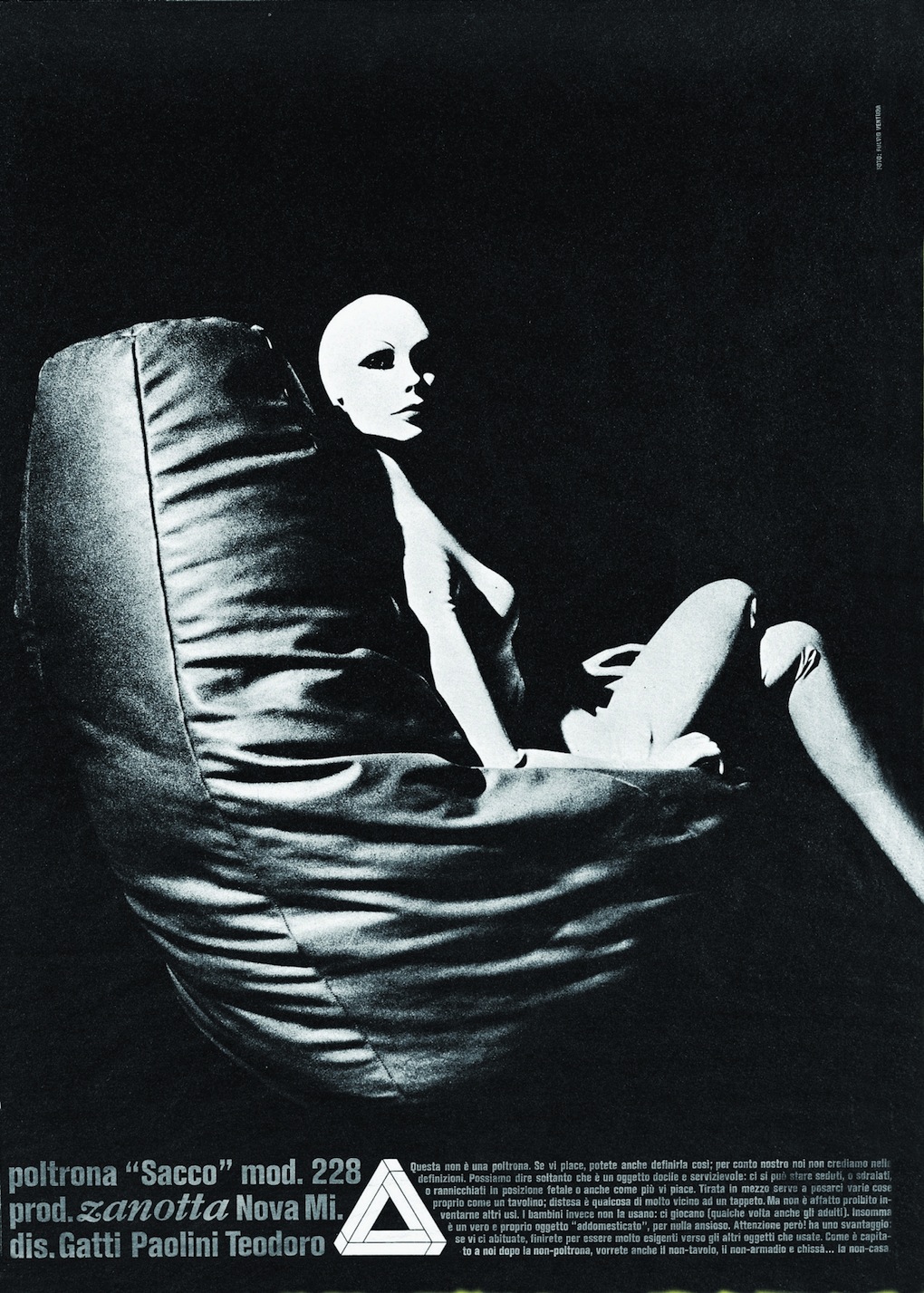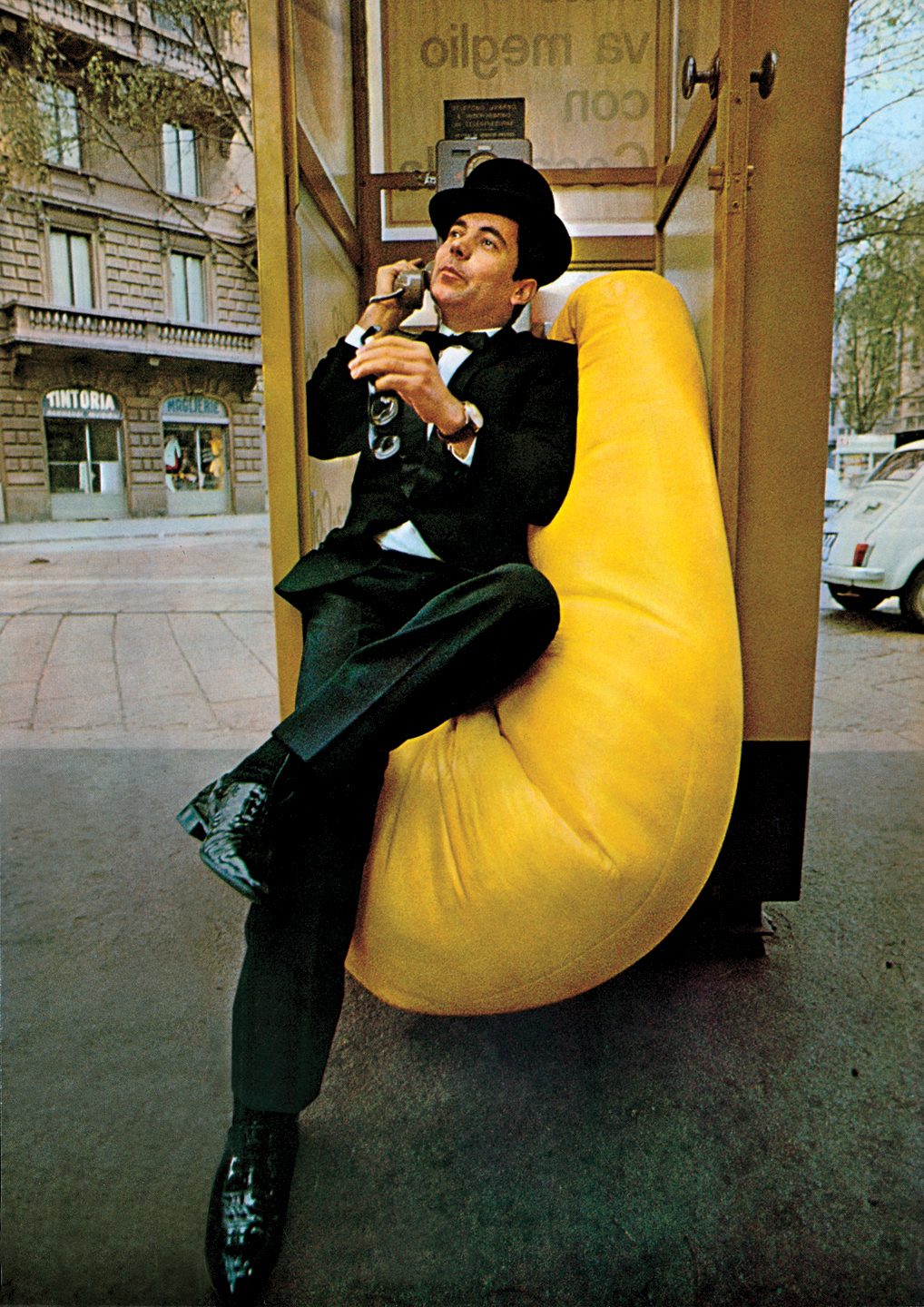31 October 2013
At the end of the sixties, three unknown designers from Turin (Piero Gatti, Cesare Paolini and Franco Teodoro) went to see Aurelio Zanotta, already a leading player in the world of unconventional design. They brought with them a plastic bag filled with polystyrene beads and proposed it as a “chair.” No sooner said than done. Design going out on a limb? Perhaps, but from that moment on people would talk of seats and no longer of chairs and armchairs. Sacco reconsidered the function of sitting without reference to traditional models. It was a true tabula rasa, a radical break with the past (and the tendency would come to be known as Radical Design). The body, for the first time, was free to rest on the seat, immerse itself in it, sink into it, and the scene of the legendary Fracchia tying himself in knots on it represented the old-fashioned petit bourgeois out of his depth in a changed world. The “beanbag chair,” as it was called in the States, was the seat of the new generations, of Schulz’s Peanuts, of the fans of pop music. Brightly colored, mutable in its posture and transportable in space. Informal, in the sense of the habits it generated, but also lacking a definite form. It’s popularity with the public over time would only be exceeded by the number of its imitations. Manufacturer: Zanotta.

Piero Gatti, Cesare Paolini and Franco Teodoro




Sacco’s first prototype, 1968.

Advertising poster, 1969.

Aurelio Zanotta, 1970.

Advertising campaign, Milan, 1970.
